DIY Vertical Garden for Small Spaces: Grow More with Less Room
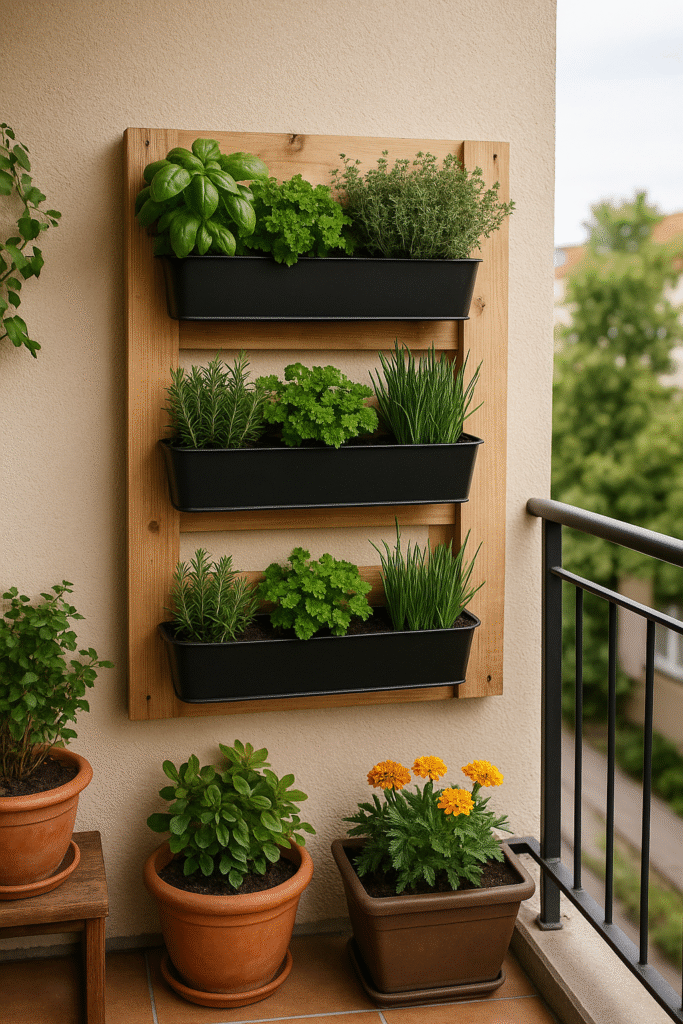
Short on space but still dreaming of a lush garden? You’re not alone! Many of us live in apartments, condos, or homes with tiny yards. But that doesn’t mean you have to give up on gardening.
The solution? DIY vertical gardening.
In this guide, I’ll show you how to build your own vertical garden for small spaces—perfect for balconies, patios, and even indoor walls. It’s a simple, rewarding project that lets you grow herbs, flowers, or vegetables without needing a big backyard.
What is a Vertical Garden?
A vertical garden is exactly what it sounds like—plants growing upwards instead of outwards. Rather than taking up precious ground space, you can:
- Hang planters on walls or fences
- Stack containers vertically
- Use fabric pockets or hanging baskets
It’s the ideal gardening solution for small spaces like balconies, patios, or even tiny kitchens.
Benefits of a DIY Vertical Garden
Vertical gardens aren’t just space-saving—they offer a range of benefits:
- Maximize Small Spaces: Grow more plants without crowding the floor.
- Enhance Visual Appeal: Add greenery to bare walls or fences.
- Improve Air Quality: Especially helpful if you’re growing plants indoors.
- Ease of Maintenance: No need to bend over to weed or harvest.
- Customizable: Build it to suit your style and available space.
What Can You Grow in a Vertical Garden?
Vertical gardens are super versatile. Here’s what you can plant:
Herbs
- Basil
- Mint
- Parsley
- Chives
- Oregano
Leafy Greens
- Lettuce
- Spinach
- Kale
- Arugula
Flowers & Decorative Plants
- Petunias
- Pansies
- Succulents
- Ferns
- Air plants
Small Vegetables
- Cherry tomatoes
- Peppers
- Strawberries
Materials & Tools You’ll Need
Before you start, gather these supplies:
- Structure: Wooden pallets, plastic planters, or hanging fabric pockets
- Mounting Hardware: Screws, hooks, or brackets
- Containers: Recycled cans, pots, or baskets
- Soil & Compost: Potting mix suitable for your plants
- Watering System: Watering can or drip irrigation (optional but handy)
- Basic Tools: Drill, scissors, garden gloves
How to Build a DIY Vertical Garden: Step-by-Step Guide
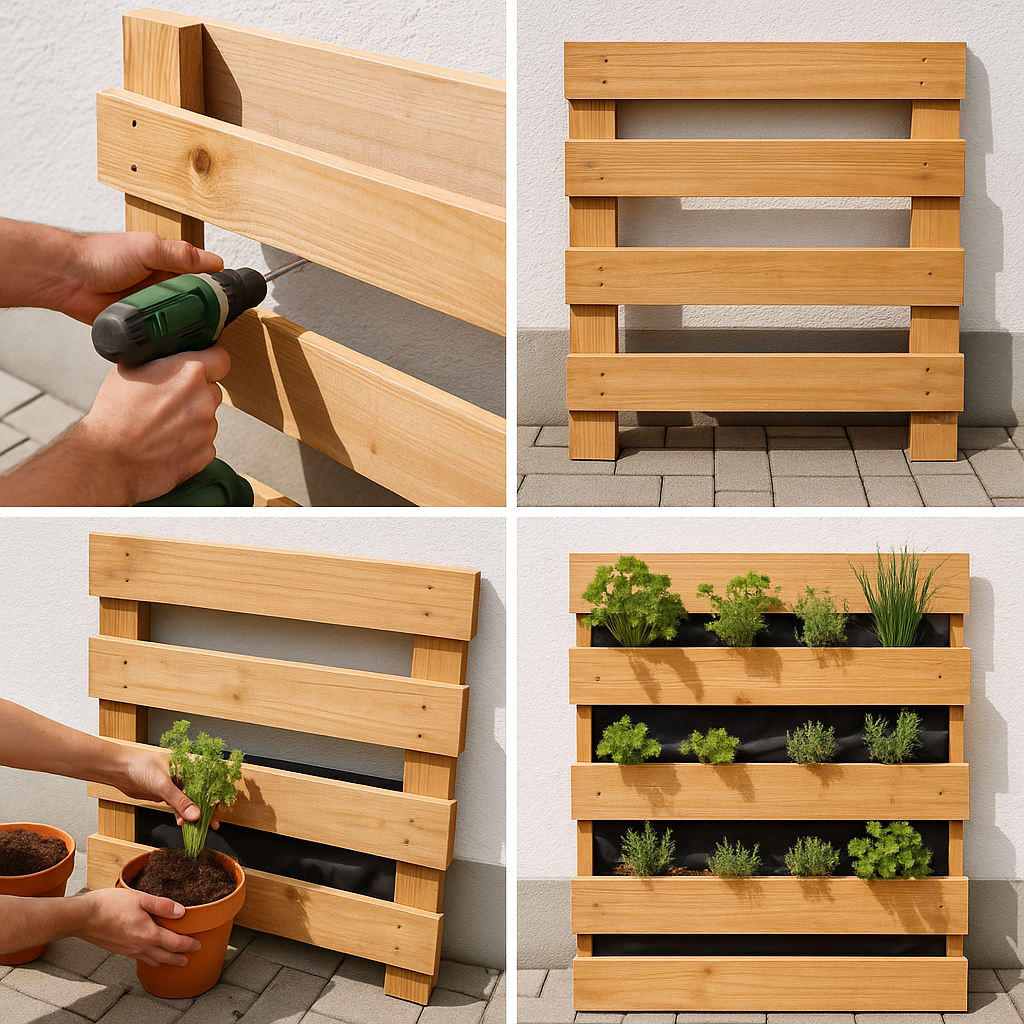
Step 1: Choose Your Location
- Outdoor Option: Balcony, fence, or patio wall
- Indoor Option: Kitchen wall or sunlit corner
- Lighting: Make sure the spot gets enough sunlight for the plants you choose.
Step 2: Pick Your Frame or Structure
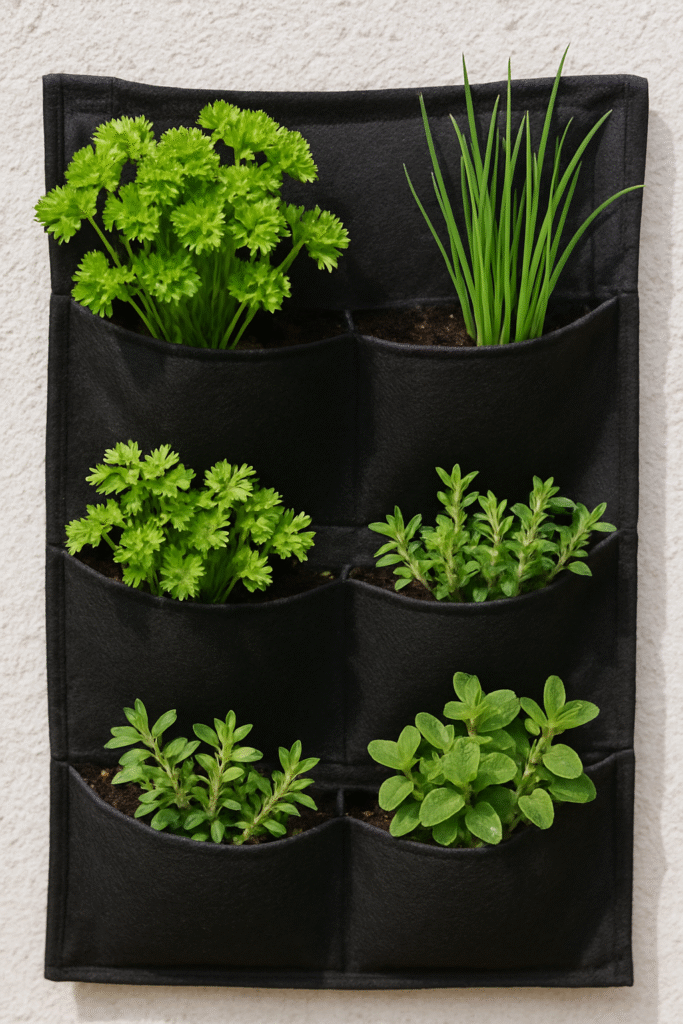
Here are some ideas:
- Pallet Garden: Lean a pallet against a wall and fill it with planters.
- Hanging Planters: Use ropes or metal hooks to suspend pots.
- Fabric Pocket Planter: Repurpose a shoe organizer for herbs or flowers.
- Wall-Mounted Shelves: Simple shelves can hold small pots for a minimalist look.
Step 3: Prepare the Containers
- Drill drainage holes in the bottom of each container (if needed).
- Line baskets or pallets with landscape fabric to hold soil in place.
- Fill each container with potting mix and compost.
Step 4: Plant Your Garden
- Arrange your plants based on height and sunlight needs.
- Place trailing plants near the bottom so they can spill over naturally.
- Mix herbs, flowers, and greens for variety and function.
Step 5: Install & Maintain
- Mount your structure securely to avoid tipping or falling.
- Water carefully—vertical gardens can dry out faster.
- Trim, harvest, and check for pests regularly.
Maintenance Tips for Vertical Gardens
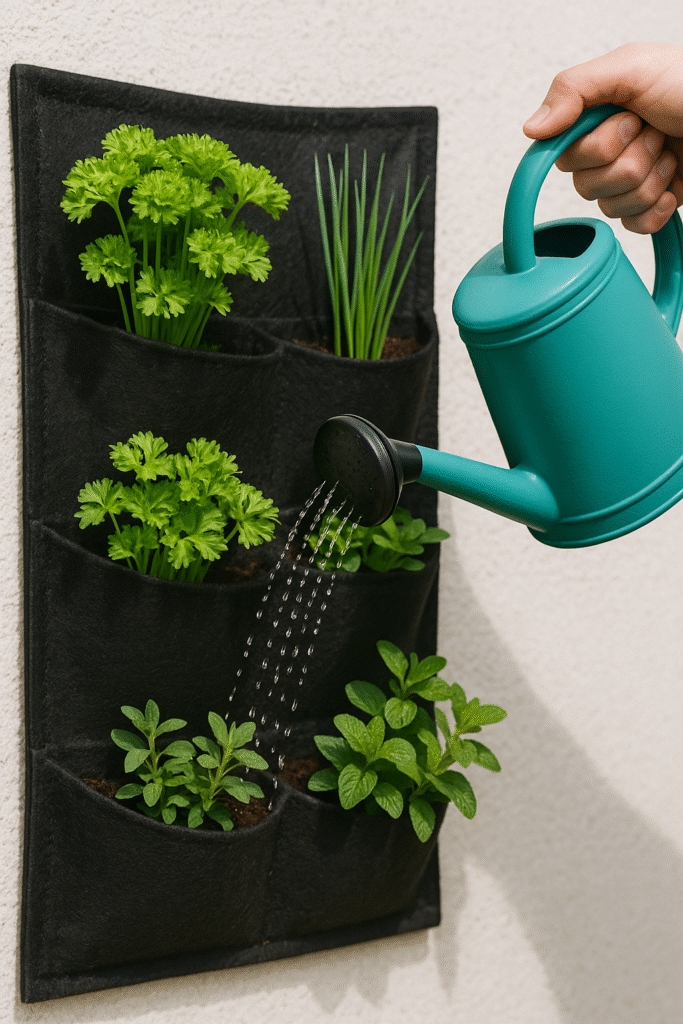
- Use slow-release fertilizer to minimize feeding chores.
- Rotate your containers occasionally for even sun exposure.
- Prune plants to keep growth manageable.
- Watch for drainage issues—vertical gardens need good water flow.
Common Mistakes to Avoid
- Choosing the wrong plants for the location (check for sun vs. shade needs).
- Overcrowding the space, which can cause plants to compete for nutrients.
- Skipping the drainage setup, leading to root rot.
- Mounting the structure improperly, risking damage or collapse.
Vertical Garden Design Ideas for Inspiration
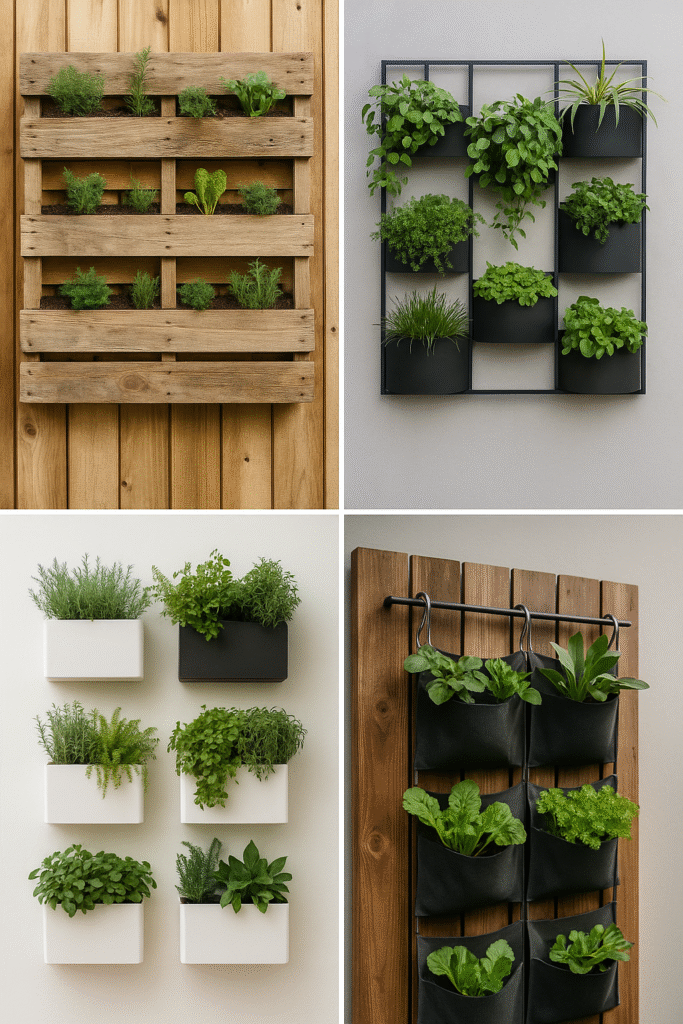
Here are some creative ideas to spark your imagination:
- Rustic Pallet Garden: Perfect for farmhouse or cottage-style spaces.
- Modern Wall Planters: Use sleek pots for a minimalist vibe.
- Hanging Herb Garden: Keep your kitchen stocked with fresh herbs.
- Vertical Succulent Wall: Great for low-maintenance greenery.
- Balcony Oasis: Mix flowers and herbs for a compact, multi-purpose garden.
Final Thoughts
A DIY vertical garden is one of the easiest and most rewarding ways to green up your space—no matter how small it is.
Whether you’re adding herbs to your kitchen, flowers to your balcony, or fresh greens to your patio, vertical gardening is a fun and affordable project anyone can try.
4 Comments